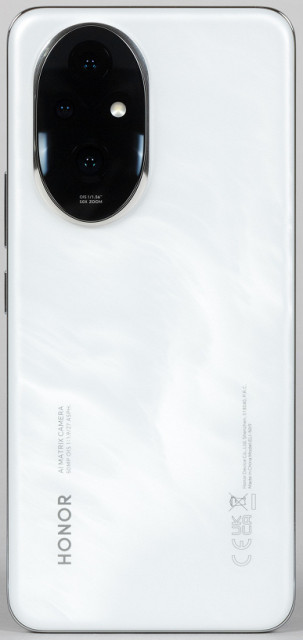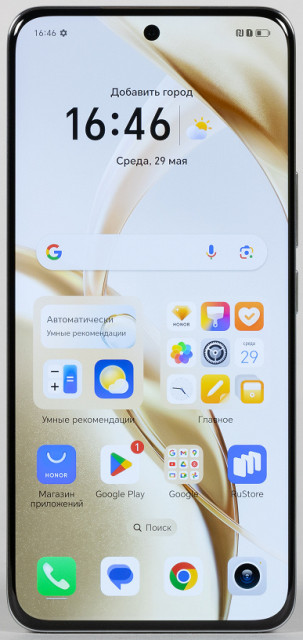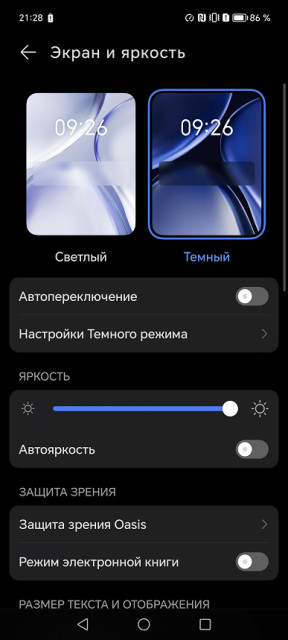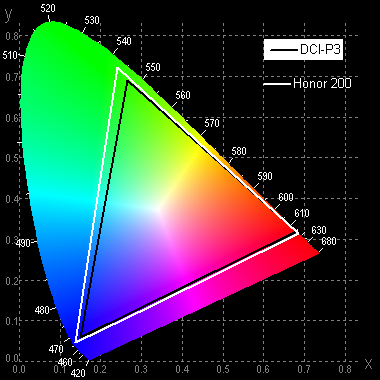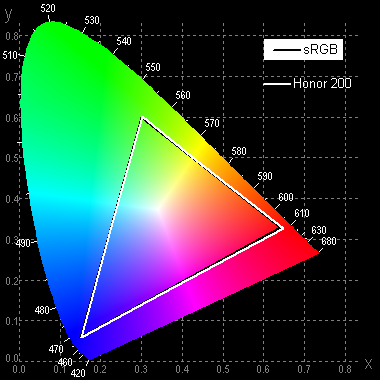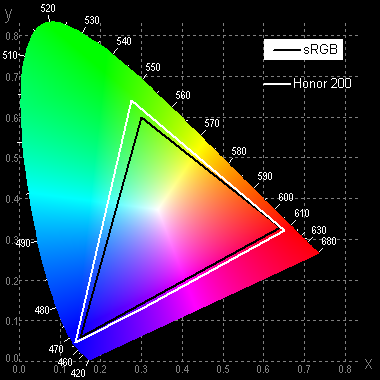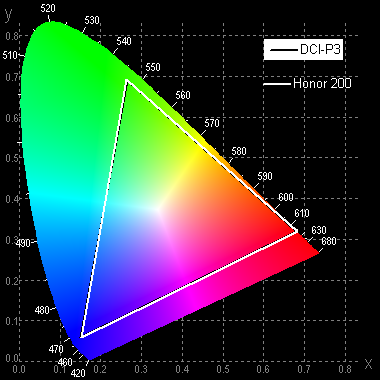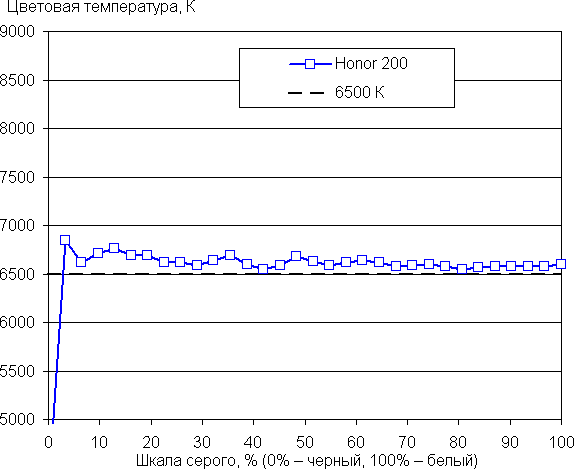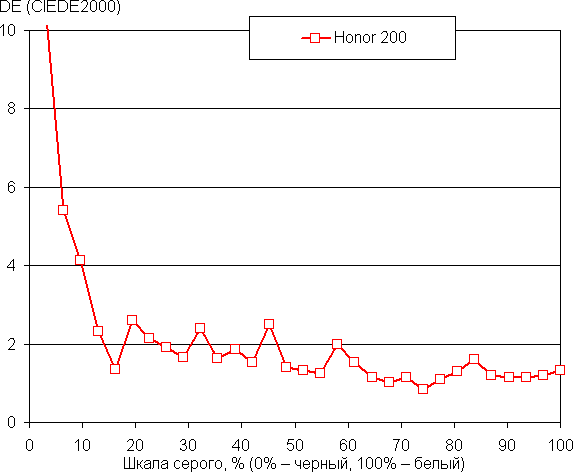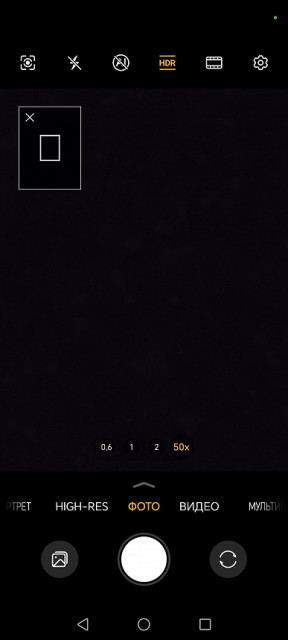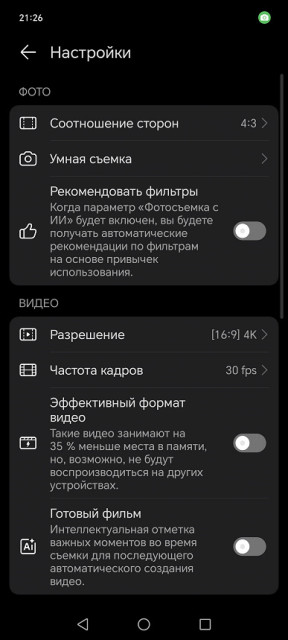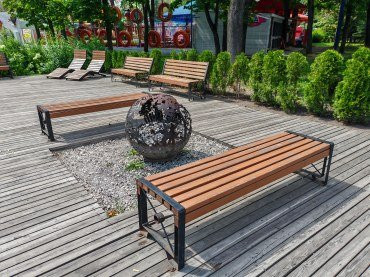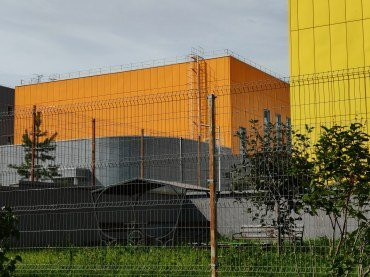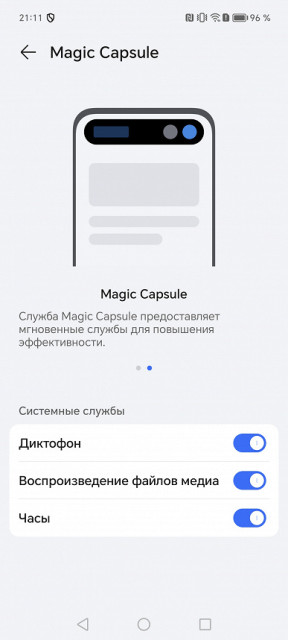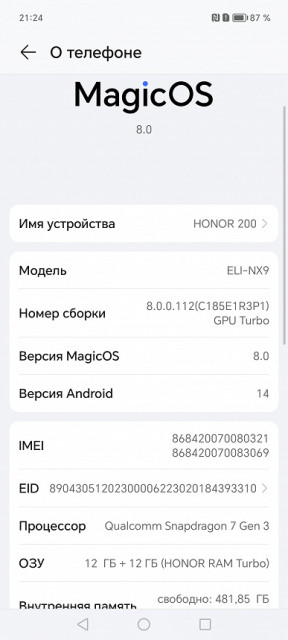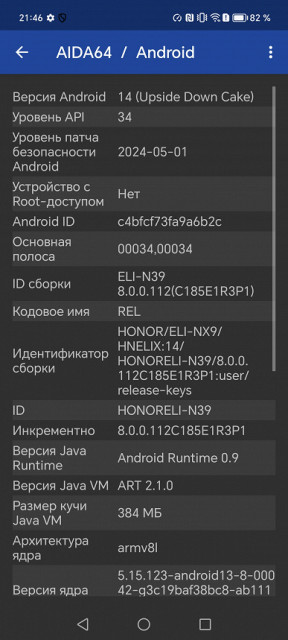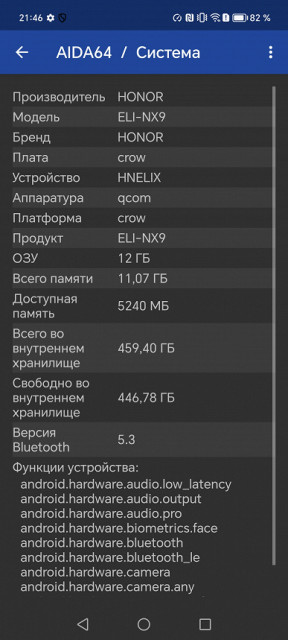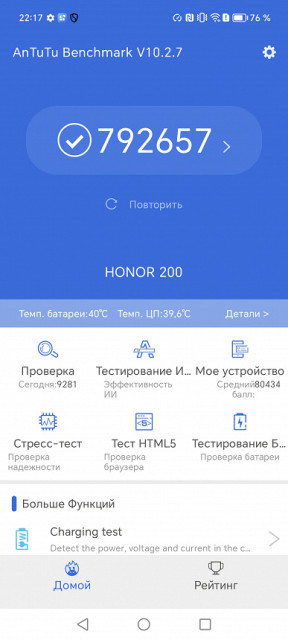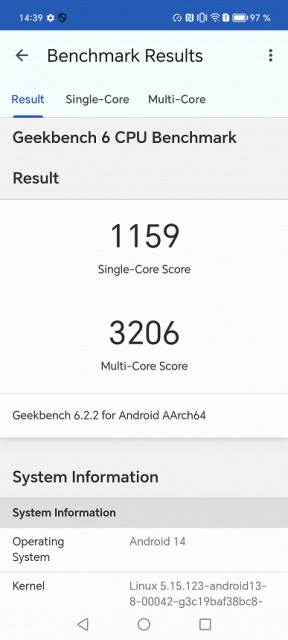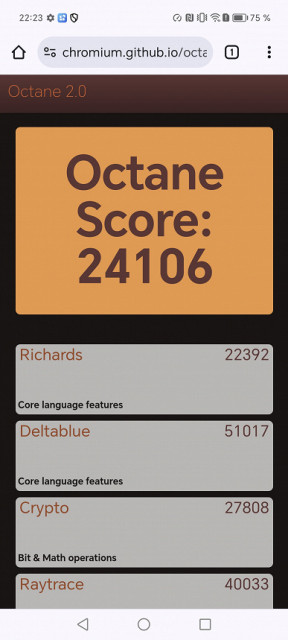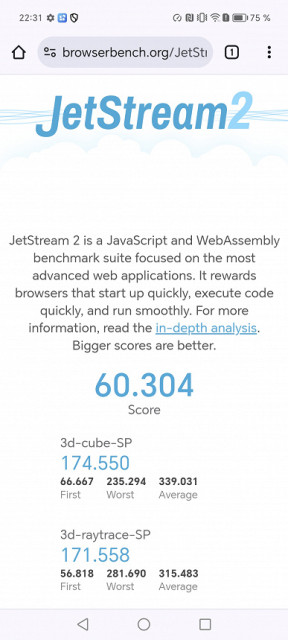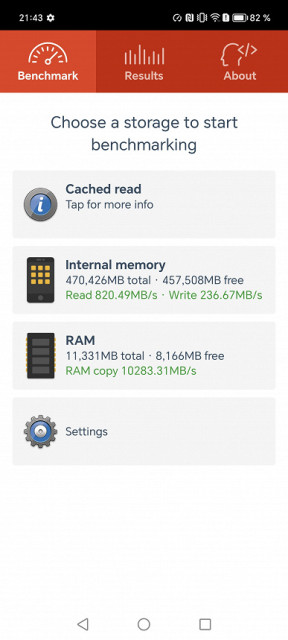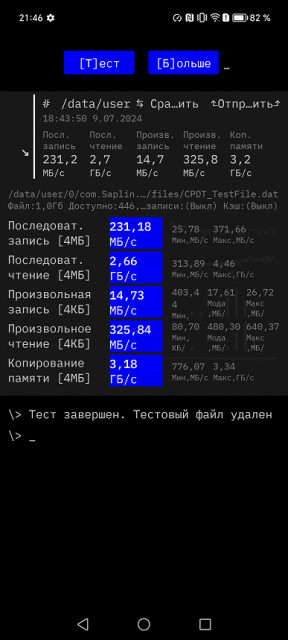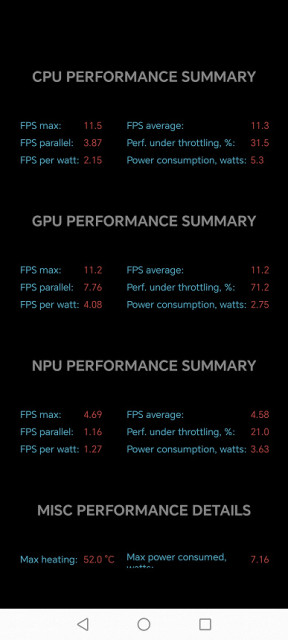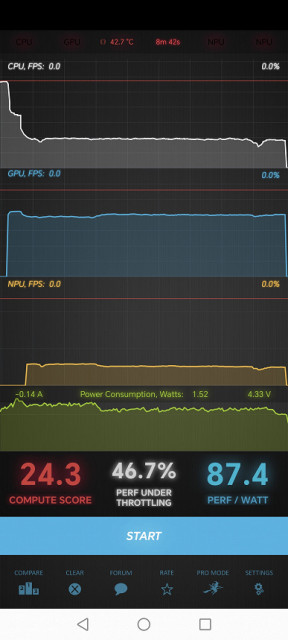Honor 200 is the mid-range model in the sub-flagship series of 2024 new products. This line focuses on the advanced portrait mode of the camera, developed in collaboration with the portrait studio Harcourt. The mid-range model is also equipped with a new type of silicon-carbon battery, has a good hardware platform and a stylish design.
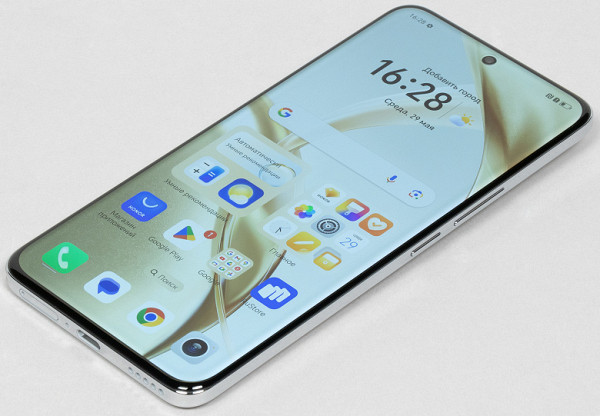
Main characteristics of Honor 200 (model ELI-NX9)
- SoC Qualcomm SM7550-AB Snapdragon 7 Gen3, 8 processor cores (1×Cortex-A715 @2.63 GHz + 3×Cortex-A715 @2.4 GHz + 4×Cortex-A510 @1.8 GHz)
- GPU Adreno 720
- OS Android 14, MagicOS 8
- Touchscreen OLED, 6.7″, 1200×2664, 436 ppi, 120 Hz
- RAM 8/12 GB, internal memory 256/512 GB
- No microSD support
- Nano-SIM support (2 pcs.)
- Networks 2G GSM, 3G WCDMA, 4G LTE, 5G
- GPS, Galileo, GLONASS, QZSS, BDS
- Wi-Fi 6
- Bluetooth 5.3, A2DP, LE, aptX HD
- NFC
- IR port
- USB 2.0 Type-C, USB OTG
- no 3.5 mm audio output for headphones
- Rear cameras 50 MP + 50 MP (long-focus) + 12 MP (wide-angle), video 4K@30 fps, gyro-EIS, OIS
- Front camera 50 MP
- Proximity and light sensors, magnetic field, accelerometer, gyroscope
- Fingerprint scanner (under the screen, optical)
- Battery 5200 mAh, charging 100 W
- Dimensions 162×75×7.7 mm
- Weight 187 g
Appearance and ease of use
The Honor 200 smartphone comes in a standard cardboard box with a minimalist design.
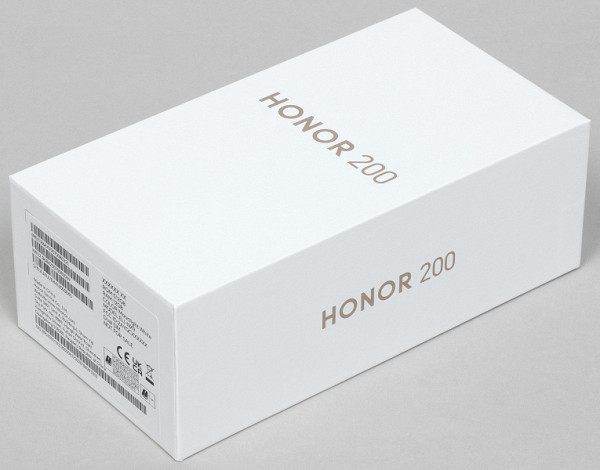
The kit includes an interface cable and a charger with a maximum output power of 100 W.
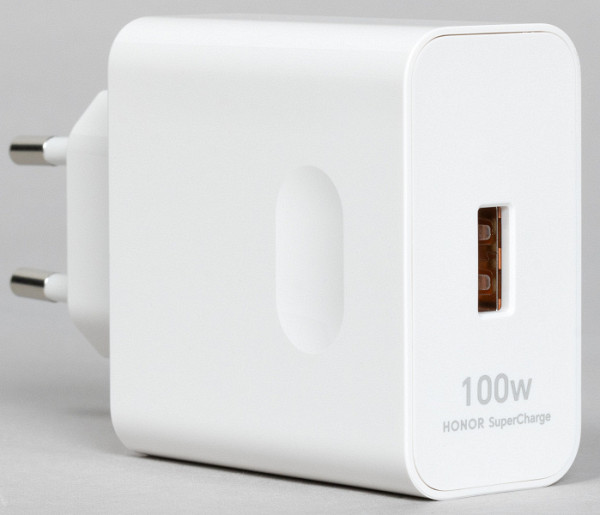
The Honor 200 smartphone has a successful design with a streamlined body. The edges of the front and back panels are slightly curved, and the side edges are slightly narrowed. At the same time, the side frame remains clear and flat, which ensures that the device is held securely in the hand.
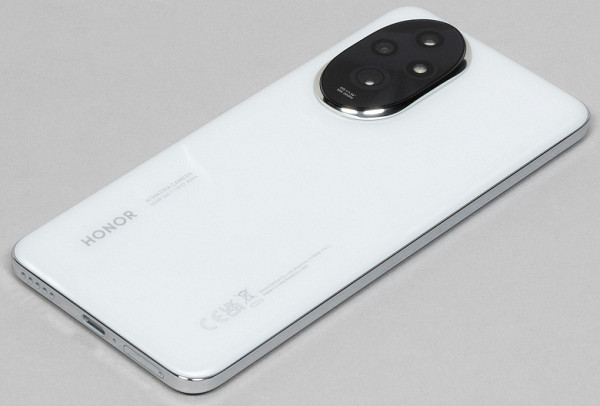
The Honor 200's materials aren't premium. The side frame is made of metallic, shiny plastic, and the back panel comes in a variety of shades and patterns. The white version has a pearlescent finish, and the matte surface doesn't shine or show fingerprints.
The cameras on the back are combined into an oval-shaped unit, framed by a silver metallic rim. They are placed in the corner, which prevents them from being covered by a finger when shooting.
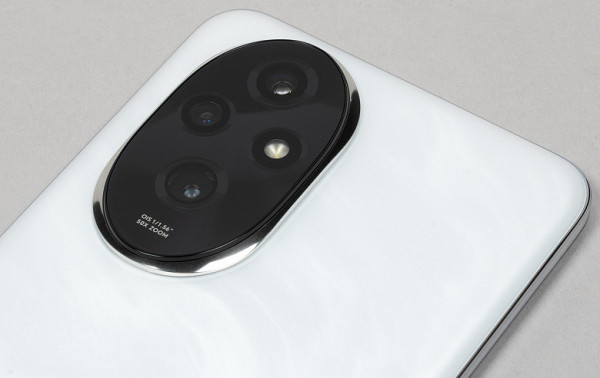
The cameras protrude beyond the body, causing the smartphone to wobble when placed on a hard surface while working with the screen.

The smartphone is neither big nor small in size. The body is well balanced in terms of size and weight. The smartphone can even be called light by today's standards.

The side buttons are large and tall, with a long, springy stroke and a clear response. They are located on one side, making them comfortable to use and easy to find with your finger.

The front camera is housed in a circular notch at the top of the screen. The fingerprint scanner is located at the bottom of the screen, under the glass. It works fairly accurately, but is not faster than a traditional capacitive scanner.
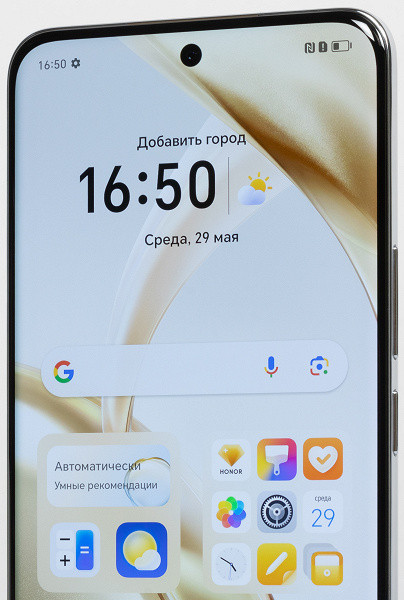
The pull-out tray on the bottom edge can accommodate two Nano-SIM cards (one on each side of the sled). There is no space for a microSD memory card.
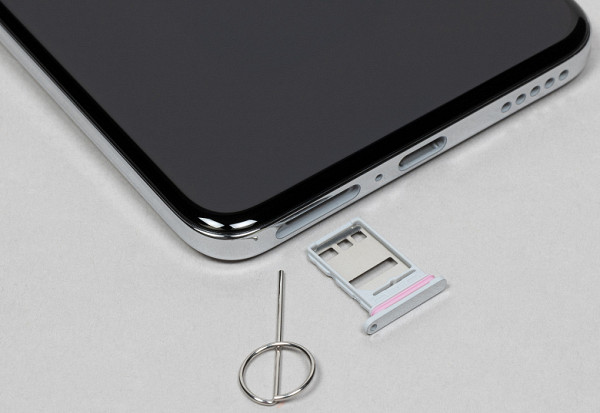
Also on the bottom edge are a speaker, microphone, and USB Type-C connector. There is no 3.5 mm audio output for a mini-jack for wired headphones.

An additional microphone and speaker are installed on the top end, as well as an IR port window.

The Honor 200 is available in Moonlight White, Emerald Green, and Velvet Black. This model does not have any certified protection against moisture and dust.
Screen
The Honor 200 features a 6.7-inch AMOLED display with a resolution of 1200×2664 (20:9), protected by glass with slightly rounded edges. The physical size of the matrix is 70×156 mm, the pixel density is 436 ppi. The frame around the screen is approximately 2 mm wide at the top and sides, and 3 mm at the bottom. The screen supports a refresh rate of 120 Hz.
The front surface of the Honor 200 display is made of a glass plate with a mirror-smooth, scratch-resistant surface. The reflection of objects shows that the anti-glare properties of the screen are better than those of the Google Nexus 7 (2013). The oleophobic coating on the screen effectively repels grease, so fingerprints are easier to remove and appear more slowly than on ordinary glass.
The maximum brightness of the screen is 565 cd / m² under normal conditions and can reach 1150 cd / m² in bright light. The smaller the white area on the screen, the higher the actual brightness. This ensures excellent readability in the sun. The minimum brightness is 2 cd / m², which allows you to use the screen in complete darkness. Automatic brightness control works correctly, adjusting the brightness depending on the conditions: in complete darkness up to 4 cd/m², in an office with artificial light — up to 125 cd/m², and in bright sunlight — up to 1150 cd/m². If necessary, the user can increase the brightness slightly, which allows you to adjust the screen to individual requirements.
At high and medium brightness levels, significant modulation is observed at a frequency of 120 Hz. The next section will present graphs of the dependence of brightness on time for various settings at a refresh rate of 60 Hz.
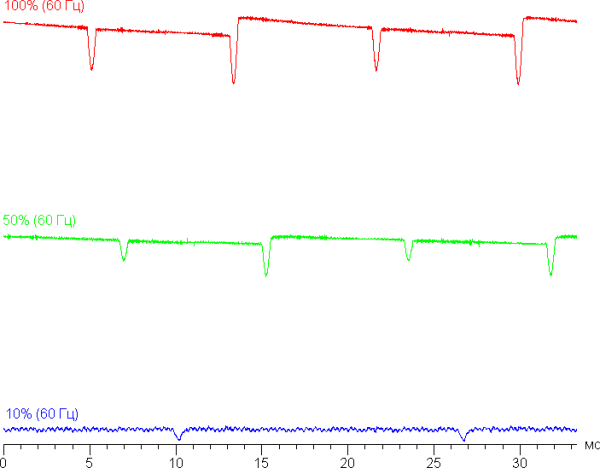
At high and medium brightness levels, the modulation frequency is low (120 Hz) and the modulation duty cycle is low, which makes screen flickering unnoticeable. When the brightness is significantly reduced, the modulation becomes high frequency (3.84 kHz), but visible flickering is still not observed.
A mode with a refresh rate of up to 120 Hz is available in the screen settings:

In this mode, the smoothness of scrolling (of menu lists, etc.) is increased. Let's see if the modulation character changes:
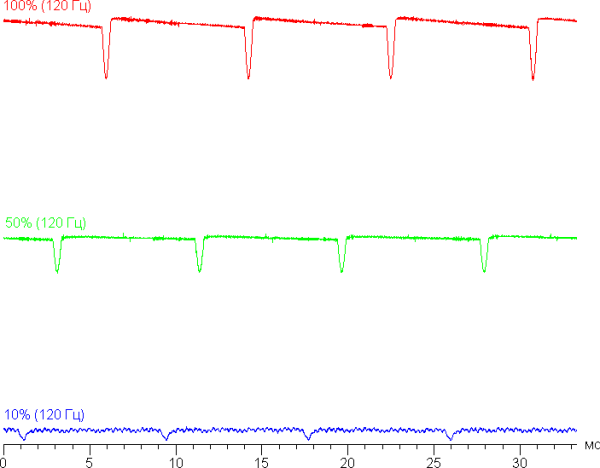
The modulation pattern remains the same, and there is still no visible flickering.
This screen uses an AMOLED matrix — an active matrix on organic light-emitting diodes. The full-color image is formed using subpixels of three colors: red ®, green (G) and blue (B). At the same time, there are twice as few red and blue subpixels, which corresponds to the RGBG scheme. This is confirmed by a fragment of a microphotograph:
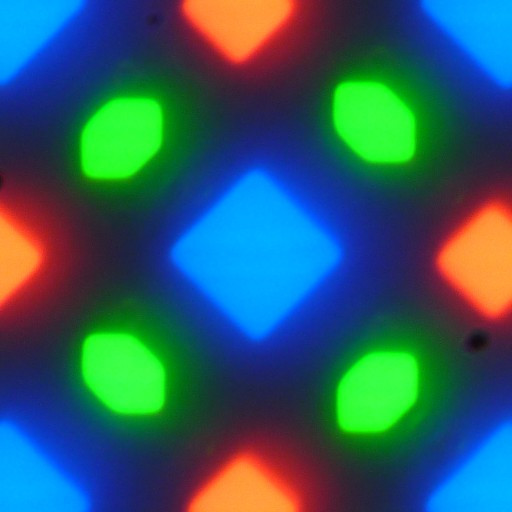
In the fragment shown, you can count 4 green subpixels, 2 red (4 halves) and 2 blue (1 whole and 4 quarters). These fragments can be repeated to cover the entire screen without gaps or overlaps. For such matrices, Samsung uses the PenTile RGBG designation. The screen resolution is indicated based on green subpixels, which means that the resolution for red and blue will be lower. As a result, some unevenness of contrast borders and other artifacts may be observed, but due to the high resolution, their impact on image quality is minimal.
The screen demonstrates excellent viewing angles. Although the brightness decreases when viewed from an angle for both screens (compared to the Nexus 7), this smartphone has a significantly smaller drop in brightness. Even with the same formal brightness, the smartphone's screen looks significantly brighter (compared to LCD screens), since it is often viewed from a slight angle. White takes on a slight blue-green tint at large angles, but black remains a deep black at all angles, making the contrast parameter less useful. For comparison, here are photos of the same images on the smartphone and the second participant in the test. The brightness of the screens is set at approximately 200 cd/m², and the color balance on the camera is set to 6500 K.
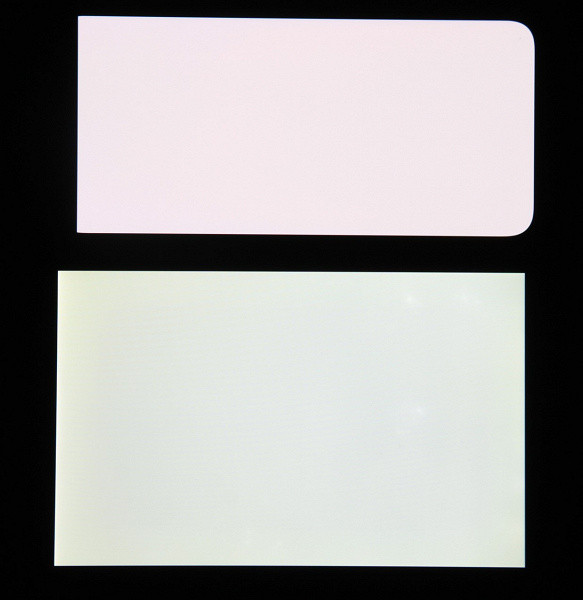
Note the good uniformity of brightness and color tone of the white field.
And the test picture (Normal [colors] profile):

The color rendering on the screen is good, the colors are saturated, although the color balance varies slightly between screens. It is worth noting that the photos do not always accurately convey the quality of color rendering and are used only for conditional illustration. For example, the reddish tint of white and gray in the photos of the smartphone screen is not noticeable when viewed perpendicularly, which is confirmed by hardware tests using a spectrophotometer. This is due to the fact that the spectral sensitivity of the camera matrix may not coincide with the perception of the human eye.
It is also worth considering that with a landscape orientation of the screen, the image fills the entire available area, including the curved edges. This leads to slight darkening and color distortion, as well as glare in the light, which makes it difficult to view images on the entire screen. Even movies with an aspect ratio of 16:9 can be affected by the bends of the screen, which is not ideal for video. A slight bend is also observed on the short sides of the screen, which also causes glare.
The photo was taken with the «Normal [colors]» profile active in the display settings, of which there are two.
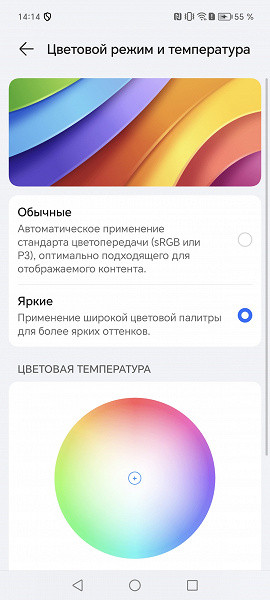
The Vivid [Colors] profile features color balance and increased color saturation:

Switching of the matrix elements state occurs almost instantly, however, at the switching front a step of approximately 17 ms wide (corresponding to a screen refresh rate of about 60 Hz) or about 8 ms (120 Hz) can be observed. For example, this is how the brightness depends on time when switching from black to white:
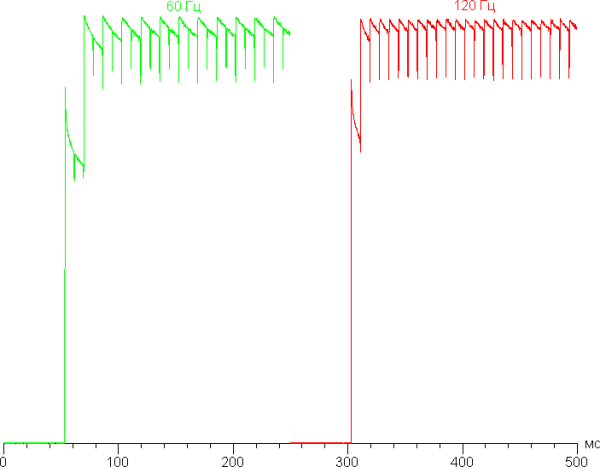
In some conditions, such a step can cause trails that follow moving objects.
The gamma curve, constructed using 32 points with equal intervals by the numerical value of the shade of gray, showed that there are no significant deviations in either highlights or shadows. The exponent of the power function of the approximation is 2.23, which is close to the standard value of 2.2. The real gamma curve deviates only slightly from the power dependence.
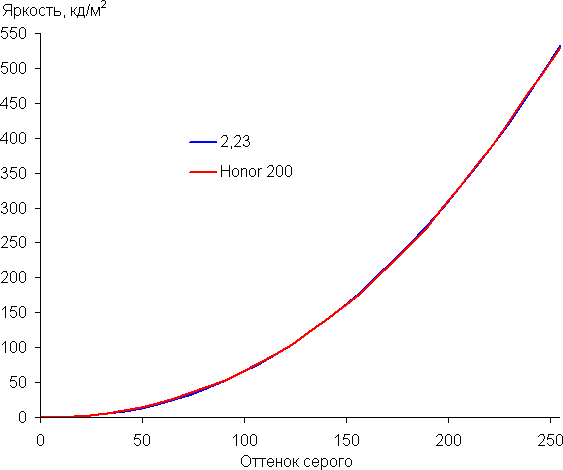
When using OLED screens, the image brightness changes dynamically depending on the nature of the displayed content, which can lead to a change in the gamma curve compared to the gamma curve of a static image. This is due to the fact that the measurements were taken when displaying shades of gray on the entire screen.
The screen color gamut depends on the selected profile (Vivid or Normal), the image profile, and the program displaying the image. In the Vivid profile, the gamut is slightly wider than that specified in the image, while in the Normal profile it is closer to that specified in the image. If the profile is missing from the image, it is assumed that it corresponds to sRGB. Programs displaying the image must also take into account the capabilities of the screen. For example, Google Chrome supports profiles, but considers the screen to be sRGB, while the standard Gallery program knows about the capabilities of the screen.
Let's consider two extreme cases:
- With an image with a DCI-P3 profile and the Vivid profile selected in the Gallery program, the color gamut is much wider than DCI-P3.
- When the image has an sRGB profile and the Normal profile is selected in the Gallery or Google Chrome program, the color gamut is close to sRGB.
In the first case, the component spectra (that is, the spectra of pure red, green and blue colors) are very well separated:
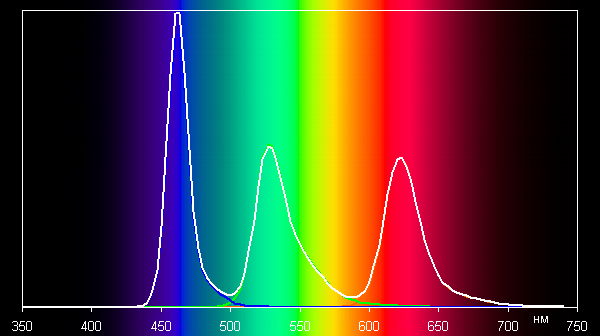
In the second case, the color components are mixed with each other to a significant degree:
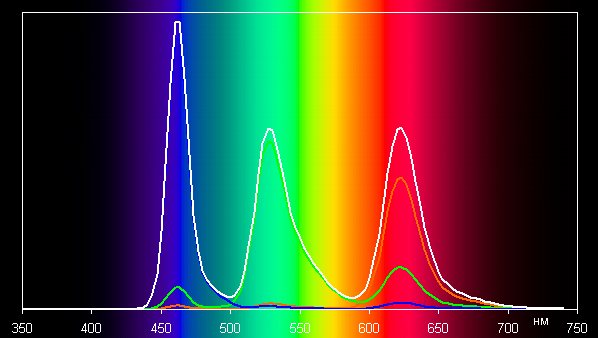
Thus, the color gamut for an image with an sRGB profile when using the Vivid profile in the Gallery or Google Chrome apps is slightly larger than sRGB. For an image with a DCI-P3 profile when using the Normal profile in the Gallery app, the gamut is close to DCI-P3.
On screens with an extended color gamut, the colors of images intended for sRGB devices may appear oversaturated without appropriate correction. Therefore, it is recommended to use the Normal profile for viewing movies, photos, and other natural images. If the image contains a profile other than sRGB, it is better to view it through the standard Gallery program.
This device allows you to adjust the color balance by selecting a color temperature profile or adjusting the hue on the color wheel.
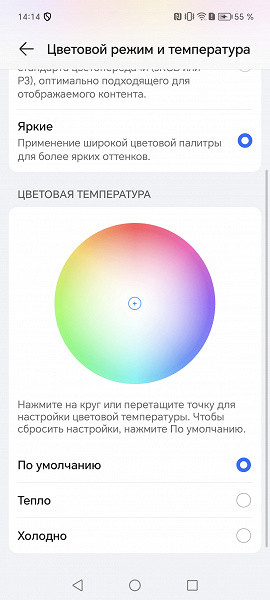
When using the Normal profile, the color balance on the gray scale remains good even without additional correction, since the color temperature is close to the standard 6500 K. The deviation from the spectrum of an absolutely black body (ΔE) is less than 3 units, which is an excellent result even for professional devices. The color temperature and ΔE practically do not change from shade to shade, which contributes to the stability of the color balance. The darkest areas of the gray scale can be ignored, since the color balance is less significant in them, and measurement errors at low brightness can be greater.
Of course, there is a function to reduce the intensity of the blue component:
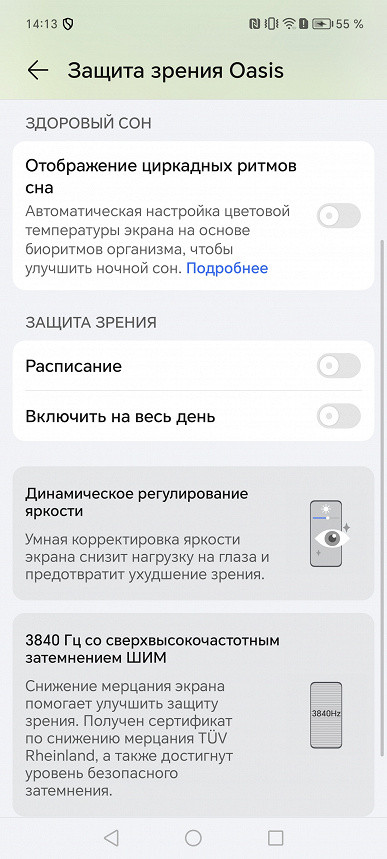
Bright light can disrupt the circadian rhythm, but this can be corrected by simply reducing the brightness to a comfortable level without changing the color balance or reducing the contribution of blue light.
This smartphone probably does not support DisplayPort Alt Mode for USB Type-C, which means that there is no ability to output images and sound to external devices via the USB port.
In general, the device's screen stands out with its high maximum brightness (up to 1150 cd / m²) and excellent anti-glare properties, which allows you to comfortably use it outdoors even on a bright sunny day. In complete darkness, the brightness can be reduced to 2 cd / m² for comfortable use. Automatic brightness adjustment works adequately, and the advantages of the screen include an effective oleophobic coating, no visible flickering, a high refresh rate (120 Hz), increased resolution, a color gamut close to sRGB and a good color balance (with the right profile) with the ability to correctly display images with the DCI-P3 color gamut. The OLED screen provides true blacks and less brightness loss when viewed from an angle compared to LCD screens. Overall, the screen quality is very high.
Note that the curved edges of the screen can distort the color tone, reduce brightness at the edges, and create glare in external lighting. However, in this case, the curved edges slightly affect the display area, which somewhat mitigates the problem.
Camera
The Honor 200 smartphone is equipped with four cameras:
- Main camera:50 MP, 1/1.56", 1.0 µm, f/2.0, PDAF, OIS.
- Telephoto camera: 50 MP, f/2.4, PDAF, OIS, optical zoom 2.5×.
- Wide-angle camera: 12 MP, f/2.2, viewing angle 112˚, AF.
- Front camera: 50 MP, f/2.1.
The main camera of the smartphone uses a Sony IMX906 sensor (1 / 1.56 ") with a resolution of 50 MP and a pixel size of 1.0 μm, as well as an f / 1.95 lens. The camera is equipped with phase autofocus PDAF and hybrid stabilization (EIS + OIS). In standard mode, the camera combines pixels to take photos at a resolution of 12.5 MP, but you can switch to Hi-Res mode for a full resolution of 50 MP.
The quality of photos in full resolution leaves much to be desired: they look loose, with visible noise and loss of detail, which makes viewing them at full size less pleasant. Contrasting objects may show slightly better detail, but in ordinary scenes this is not so noticeable. Reduced photos look better due to improved contrast and sharpness, but there is a preliminary cropping of edges and corners, which does not provide an «honest» 4-in-1 conversion.
Overall, the camera provides decent quality of photos. Detail is good, the dynamic range allows for midtones to be worked out, and sharpness, clarity, contrast and volume are at a level. There is no noticeable noise in reduced photos. Although this is not the level of flagship models, for the mid-range segment the quality is quite acceptable.
Here are more examples of photos taken with the main camera:
The new Honor AI Portrait also offers a new portrait mode developed in collaboration with Harcourt Studio. This mode includes a set of software tools for color correction, exposure adjustment, and shutter speed adjustment, based on artificial intelligence technology, to improve light and shadows. The Honor AI Portrait is a set of presets that mimic the artistic techniques of Harcourt Studio.
The second camera has a 50 MP sensor and an f/2.4 aperture, phase autofocus, and optical stabilizer. It implements 2.5× optical zoom and, like the main camera, by default takes pictures in 12.5 MP resolution with pixel binning, although it is possible to switch to a full 50 MP resolution. There is a 2× button in the viewfinder, but this is a digital zoom that uses the main camera's image crop. The telephoto camera only works with 2.5× optical zoom. Although shooting in full 50 MP resolution is not always justified, the reduced images are clear and high-quality, and the zoom mode of this camera copes well with photographing the surrounding reality.
The wide-angle module has differences in color rendering compared to the main camera, but at the same time it demonstrates good detail and sharpness. Despite the fact that the wide-angle camera cannot replace the main one and geometric distortions are inevitable, the quality of the pictures is still better than average for wide-angle smartphone cameras.
The camera can record video in 4K resolution at 30 frames per second. The 4K@60 fps mode, like the older model, is missing. The video quality is good: the image is bright, contrasty, rich and detailed, although a small strobe is noticeable. The sound is recorded well.
The front camera (50 MP, f/2.1) also demonstrates excellent shooting quality. It provides high detail, good sharpness and accurate color rendition without blurring.

Telephone and communications
The Honor 200 smartphone supports networks up to 5G and demonstrates stable operation within the city limits of Moscow. It quickly restores connection after interruptions and does not lose signal. The device is equipped with a wireless adapter with support for three Wi-Fi 6 bands, Bluetooth 5.4 and NFC, and also supports e-SIM. All necessary sensors, including a gyroscope, are present. The interlocutor's voice in the speaker is clear, and the volume is average.
The satellite navigation module supports GPS, Galileo, GLONASS, QZSS and BDS. Satellites are detected quickly during a cold start, and the positioning accuracy remains high.
Software and multimedia
Honor 200 runs on Android 14 with MagicOS 8 shell. The interface is optimized and pleasant to use, without intrusive advertising and with full access to Google services. There is also a proprietary app store and the ability to install the Russian RuStore repository to search for the necessary Russian applications, including banking ones.
In the upper curtain of the interface, divided into two parts, near the front camera there is an area displaying information about charging and incoming messages, called the «magic capsule». Magic Portal is also implemented — a new way to interact with content that allows you to easily move texts and images between applications using AI technologies. For example, you can select an address for navigation, create a note from the selected text, search for products by pictures or share photos on social networks.
The smartphone is equipped with two high-quality stereo speakers that provide loud, clear and surround sound. Bluetooth 5.3 is supported for wireless headphones, as well as Honor Histen 7.1 and Spatial Audio sound effects.
Performance
Honor 200 is equipped with a Qualcomm SM7550-AB Snapdragon 7 Gen3 processor, which includes 8 cores, and the graphics are processed by the Adreno 720 GPU. The device is available with 8 or 12 GB of RAM (LPDDR5X) and 256 or 512 GB of built-in storage (UFS 4.0). There is no option to expand the memory using microSD cards, but it supports connecting external devices via the USB Type-C port in USB OTG mode. Although the platform is relatively new and mid-level, it is inferior to the flagship solutions of the series. In the AnTuTu test, the smartphone scores about 800 thousand points, which is above average. In real conditions, the performance is enough for smooth operation of the interface and virtual entertainment. Games can be launched and played, although it is better not to count on high graphics settings.
Testing in complex tests AnTuTu and GeekBench:
For convenience, we have collected all the smartphone test results in tables, which also present several other models from different segments tested on the latest versions of popular benchmarks. This allows you to clearly evaluate the data obtained. Unfortunately, it is impossible to use results from different versions of benchmarks within one comparison, which leaves many worthy and relevant models that were tested on older versions of programs outside the comparison.
| Honor 200 (Qualcomm Snapdragon 7 Gen3) | Honor 200 Pro (Qualcomm Snapdragon 8s Gen3) | Google Pixel 8 Pro (Google Tensor G3) | Realme 12+ 5G (MediaTek Dimensity 7050) | Huawei Pura 70 Ultra (Kirin 9010) | |
|---|---|---|---|---|---|
| AnTuTu (v10.x) (higher is better) | 792657 | 1297546 | 1033512 | 620852 | |
| GeekBench 6 (bigger is better) | 1159/3206 | 1740/4535 | 1566/3701 | 929/2277 | 1446/4492 |
Testing the graphics subsystem in GFXBenchmark gaming tests:
| Honor 200 (Qualcomm Snapdragon 7 Gen3) | Honor 200 Pro (Qualcomm Snapdragon 8s Gen3) | Google Pixel 8 Pro (Google Tensor G3) | Realme 12+ 5G (MediaTek Dimensity 7050) | Huawei Pura 70 Ultra (Kirin 9010) | |
|---|---|---|---|---|---|
| GFXBenchmark Aztec Ruins OpenGL (1080p Offscreen, fps) | 56 | 45 | 107 | 29 | 82 |
| GFXBenchmark Aztec Ruins Vulkan (1080p Offscreen, fps) | 66 | 129 | 108 | 26 | 82 |
| GFXBenchmark Car Chase ES 3.1 (1080p Offscreen, fps) | 47 | 96 | 78 | 26 | 56 |
| GFXBenchmark Manhattan ES 3.1 (1080p Offscreen, fps) | 83 | 169 | 142 | 45 | 60 |
| GFXBenchmark T-Rex (1080p Offscreen, fps) | 174 | 434 | 328 | 105 | 337 |
Testing in browser cross-platform tests:
| Honor 200 (Qualcomm Snapdragon 7 Gen3) | Honor 200 Pro (Qualcomm Snapdragon 8s Gen3) | Google Pixel 8 Pro (Google Tensor G3) | Realme 12+ 5G (MediaTek Dimensity 7050) | Huawei Pura 70 Ultra (Kirin 9010) | |
|---|---|---|---|---|---|
| Google Octane 2 (bigger is better) | 24106 | 19467 | 52617 | 7230 | 5180 |
| JetStream (bigger is better) | 60 | 70 | 102 | 29 | 20 |
Memory speed test results:
Heat
We test for performance degradation when heating using the Burnout Benchmark program, which allows you to load the CPU, GPU and NPU:
| Load on | Heating performance, as a percentage of maximum |
|---|---|
| CPU | 32% |
| GPU | 71% |
| NPU | 21% |
Battery life
The Honor 200 smartphone is equipped with an advanced silicon-carbon battery with a capacity of 5200 mAh. In tests, the device shows an above-average, even high, level of autonomy.
Testing was carried out at a normal level of power consumption, without enabling power-saving functions, although such functions are present in the smartphone. Test conditions: the minimum comfortable brightness level is set (about 100 cd / m²). The tests include: continuous reading in the Moon + Reader application (using the standard light theme), continuous viewing of HD video (720p) via a home Wi-Fi network, and the Injustice 2 game with automatic graphic settings.
| Battery capacity | Reading mode | Video mode | 3D gaming mode | |
|---|---|---|---|---|
| Honor 200 | 5200 mAh | 29 h 00 m | 25:00 p.m. | 8:00 a.m. |
| Realme GT 6 | 5500 mAh | 32 h 00 m | 27:00 | 9:00 a.m. |
| Samsung Galaxy S24 Ultra | 5000 mAh | 32 h 00 m | 26 h 00 m | 9:00 a.m. |
| Honor Magic6 Pro | 5600 mAh | 38 h 00 m | 30:00 a.m. | 9:00 a.m. |
| Google Pixel 8 Pro | 5050 mAh | 22:00 | 18:00 | 7:00 a.m. |
| Honor 90 | 5000 mAh | 21:00 | 18:00 | 7:00 a.m. |
| Honor Magic V2 | 5000 mAh | 21:00 | 17:00 | 6:00 a.m. |
| Oppo Find N3 | 4805 mAh | 20:00 | 18:00 | 6:00 a.m. |
All these are the maximum possible figures obtained in «ideal» conditions, including without SIM cards installed. Any changes in the operating scenario will most likely lead to worse results.
The smartphone charges in an hour using the included charger.
Results
The Honor 200 is available in three colors. The price varies depending on the configuration: $550 for the model with 8 GB of RAM and 256 GB of internal memory and $605 for the version with 12 GB of RAM and 512 GB of storage.
The smartphone is equipped with an excellent AMOLED screen, has a good set of network modules and demonstrates high autonomy. The performance is at a good average level, which satisfies basic needs. The cameras provide decent photo and video quality in their price segment. Overall, the price of the device is quite justified.

